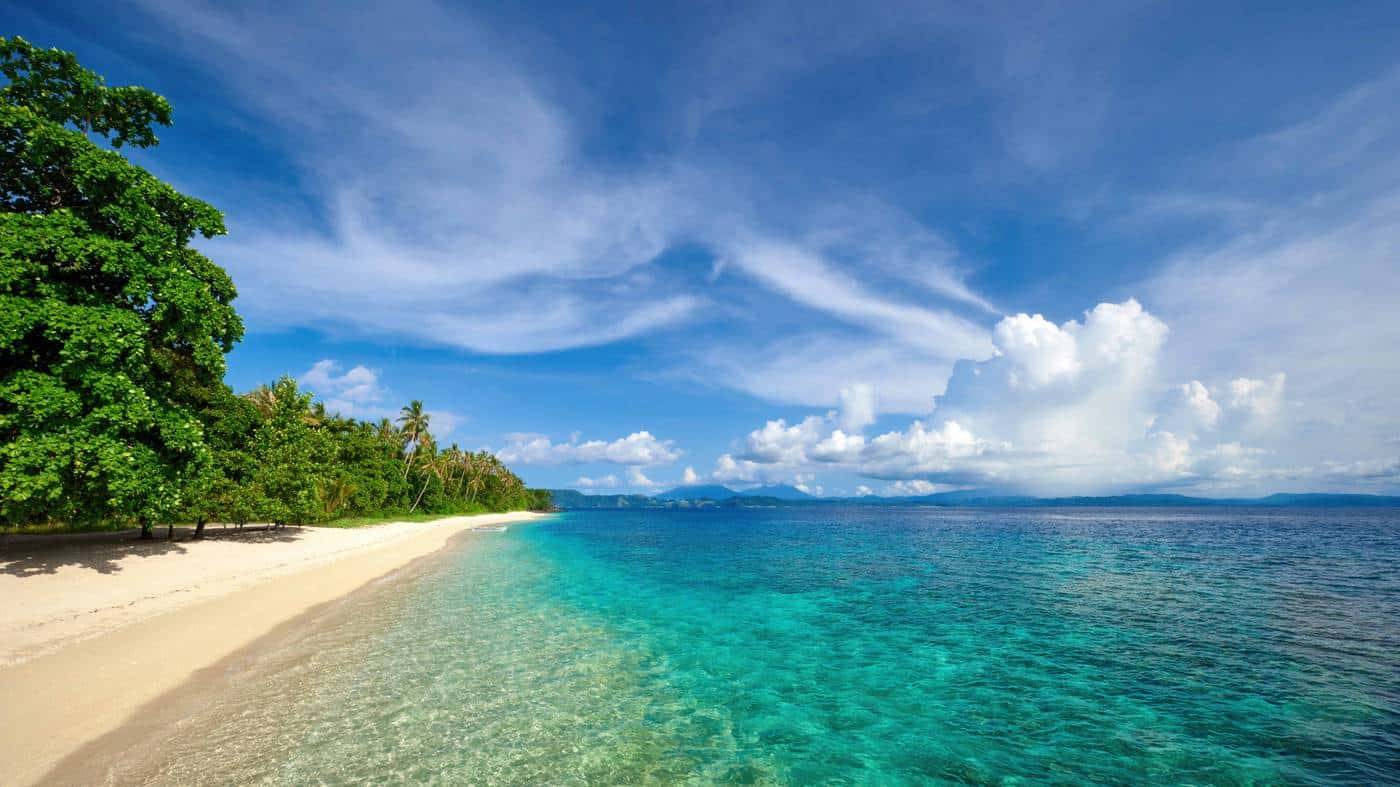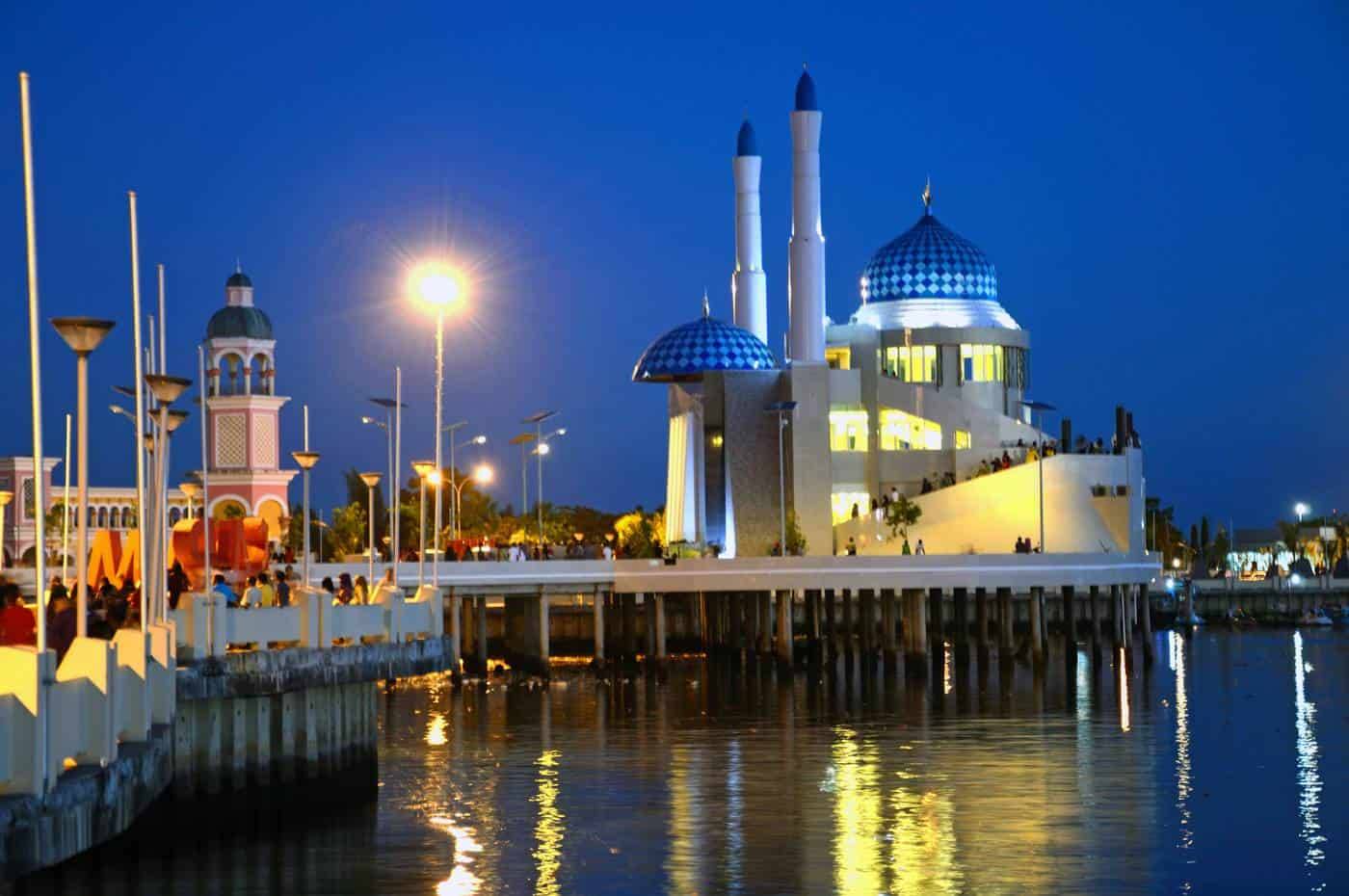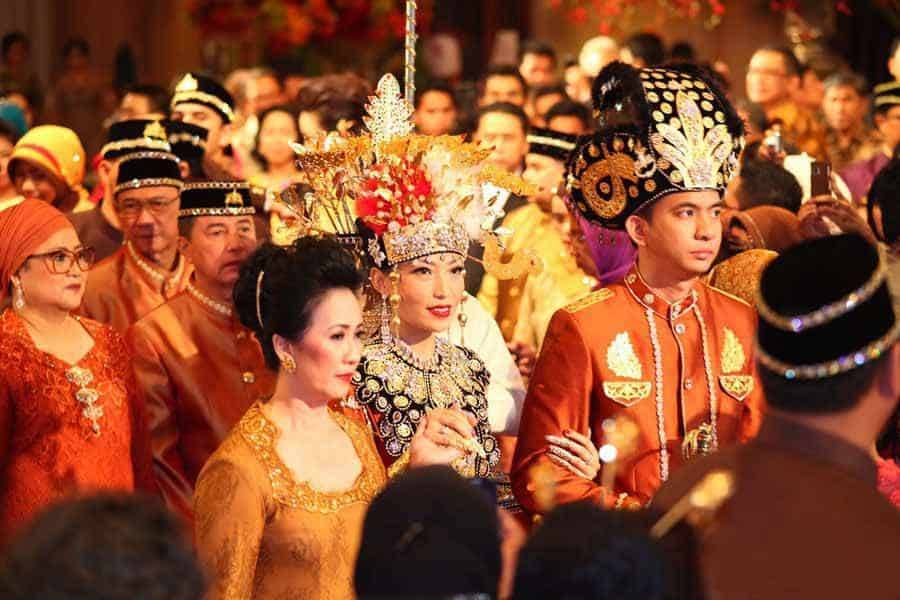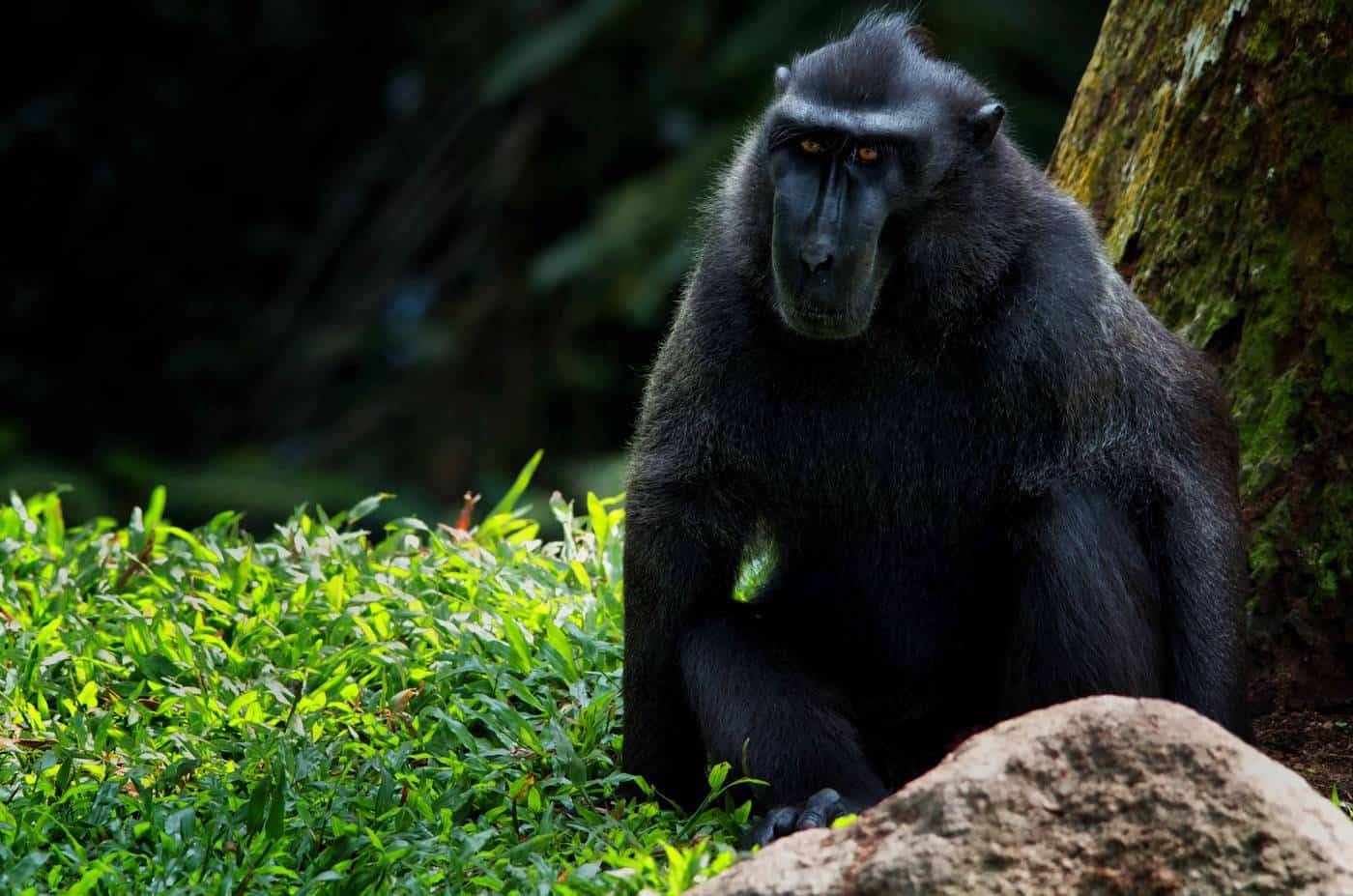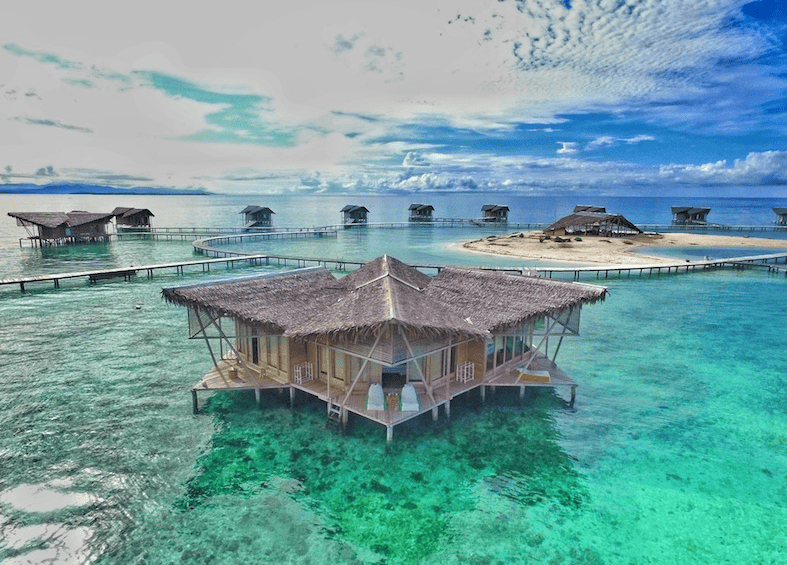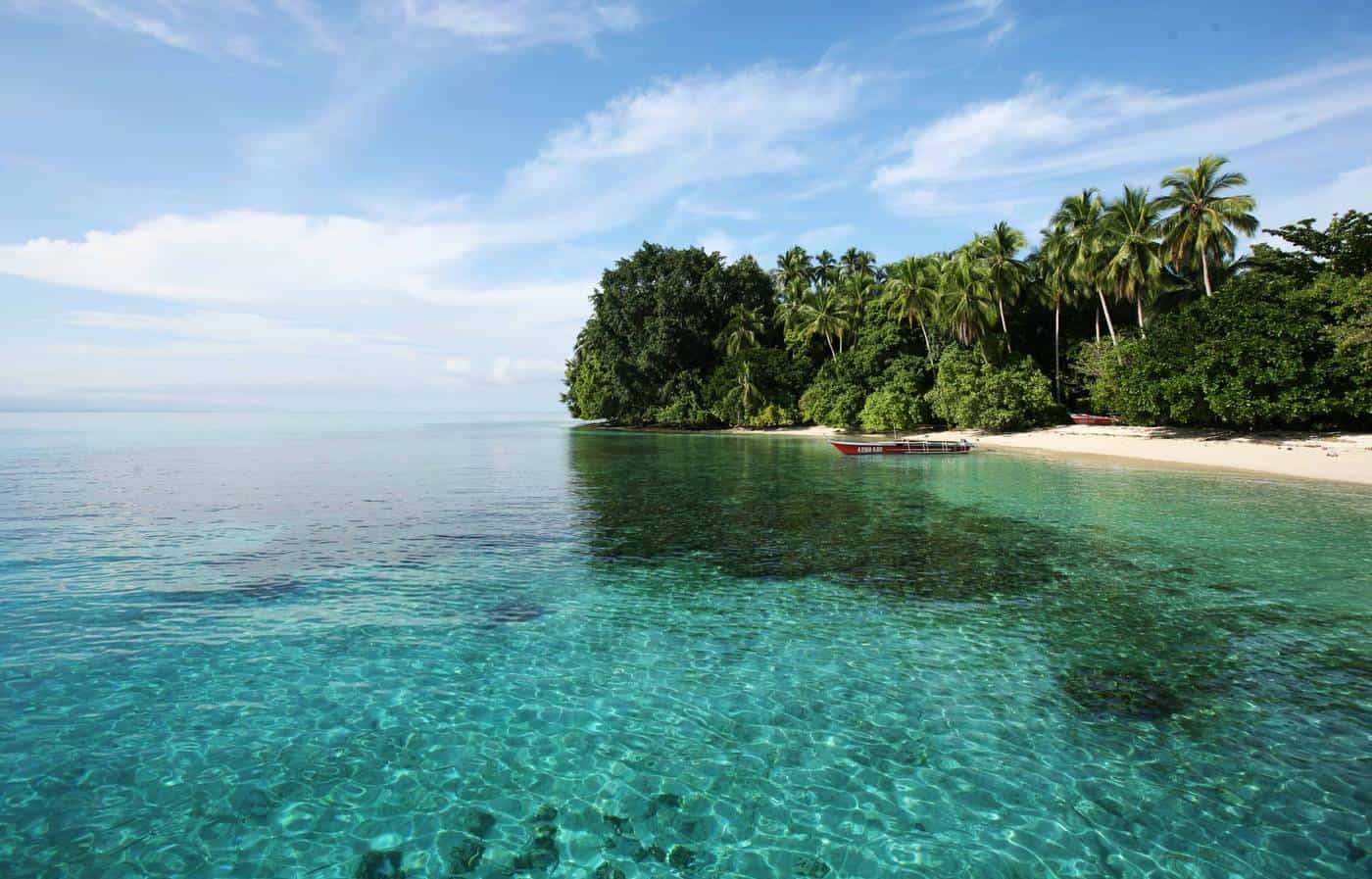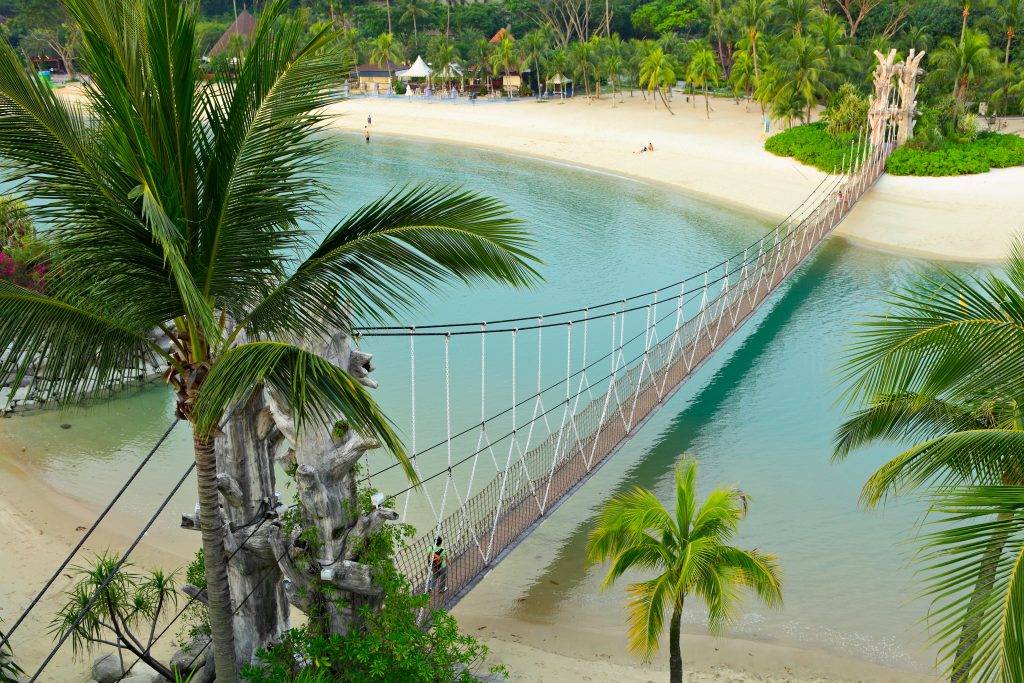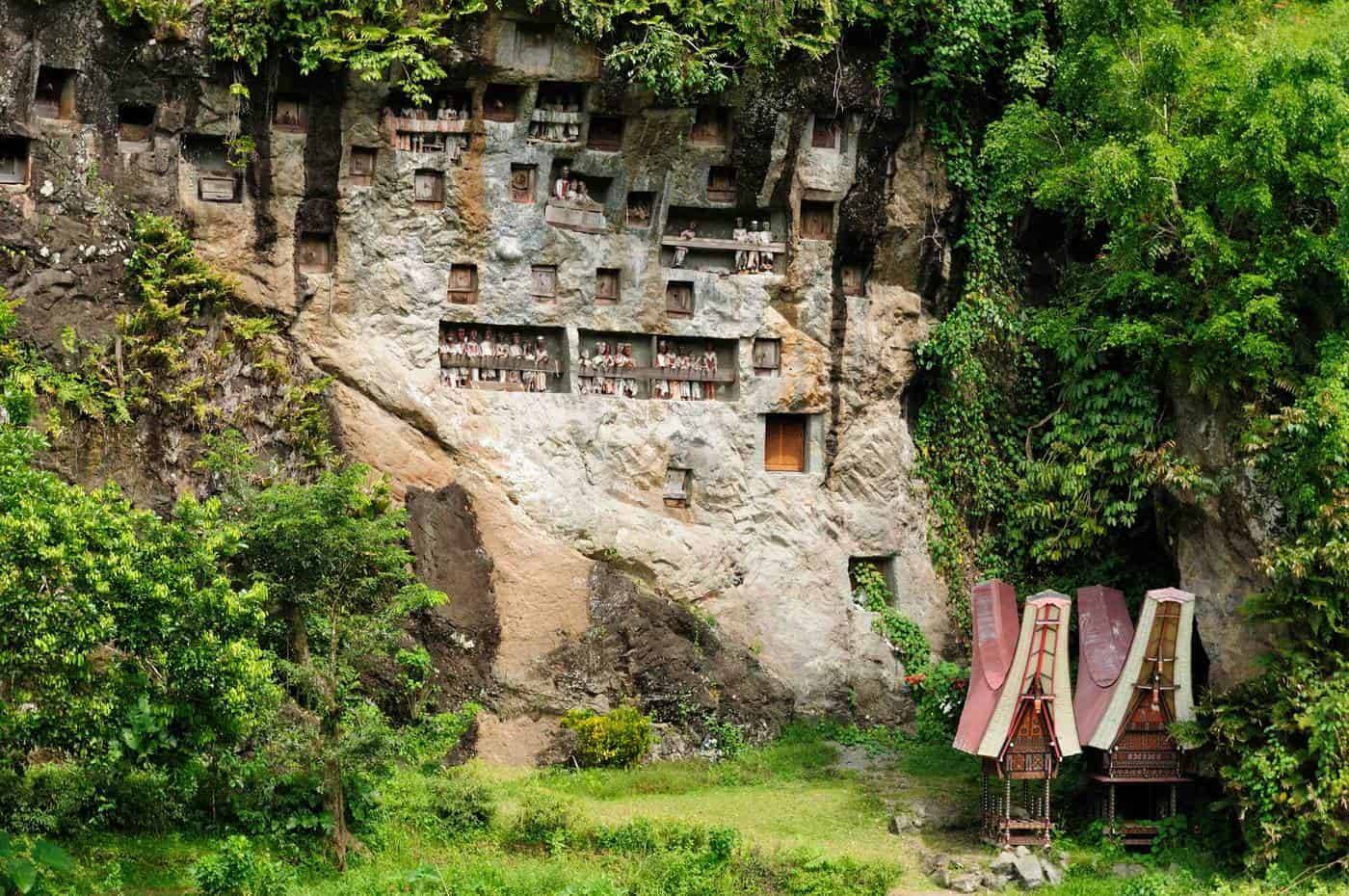
MANIFOLD GORONTALO
Gorontalo province is gifted by two quite different coastlines: the Celebes Sea in the north and Gulf of Tomini in the south. The northern regions are defined by jungly mountains and spectacular panorama.
Similarly to the North Sulawesi, the fauna and flora are boundless and fairly untouched. Dwarf buffalo, Tarsier, Maleo and Babirusa are among the most remarkable animal species whereas the vegetation includes Ebony tree, Eucalyptus, Orchids and Rattan.
In the south, magnificent forest vistas are amplified by turquoise seas of the Tomini Bay – dotted with idyllic offshore isles and atolls.
Most of the islands are uninhabited with white sandy beaches, coral reefs and warm shallows, and the equatorial setting makes this destination a tropical paradise with excellent diving locations.
Gorontalo is also the northern gateway to the legendary Togean Islands and their iconic sea gypsy settlements.
GORONTALO CITY
The provincial capital is a modern city where the traditional Islamic, Dutch colonial and contemporary architecture stand in stark contrast. Surrounded by verdant hills, lakes and waterfalls, pristine brilliant-blue seas and radiant corals, Gorontalo is an increasingly popular travel hub.
Muslim Food is a household name in Indonesia and where else if not in Gorontalo you could have the change to try some of the best cuisines: from spicy sambals, sauces and soups, to nasi kuning (famous yellow coconut rice), ilabulo (chicken, egg and sago wraps), woku (spicy gravy usually served with fish), milu siram (seafood in corn chowder) and the famed durian treats – you could spend weeks in Gorontalo to sample its culinary goodies.
Rumah Makan Hola is the best spot to eat and see how the traditional meals are prepared.
Wandering around the town on foot will give the traveller an opportunity to discover the main landmarks, backstreets, town`s authentic culture and get the feel of the city (for more comfort you can use bentor – local transport).
If you rent a scooter, you can explore the surrounds, including Lake Limboto, Taman Bermain nature reserve, Lombongo hot springs, the southern beaches as well as the north coast and its paradisiacal atolls.
GORONTALESE HANDICRAFT
Gorontalo Regency is the industrial heart of Karawo – a unique Gorontalese handicraft. Karawo embroidery and lacework has been made traditionally since the 16th century, and the process of weaving is very complicated and time-consuming, and it requires a good deal of patience, concentration and precision.
Upiya Karanji is a particular type of songkok (Peci Gusdur) – a woven felt-cap widely worn by Muslim males in Indonesia. There are various eco-tours to the nearby Karawo villages where the local artists demonstrate the weaving techniques.
Nevertheless, the local Karawo embroidery, Kerawang lace and Upiya Karanji are best presented by the local designers at Gorontalo Cultural & Fashion Show.
ESSENTIAL EXPERIENCES IN GOROTNALO
Rumah Makan Sabar Menanti – locally known as Rumah Makan Hola, this is the place where to learn more about the Gorontalse tradition of making yellow coconut rice (nasi kuning), typically served with a soup – delicious! You can also visit the night markets at Melati Hotel
Karawo Cultural Festival & Tours – annual show where the local Karawo embroidery, Kerawang lacework and Upiya Karanji are presented by the local designers at Karawo Fashion Show (musical and dance performances, carnival, photography contest, etc.), you can also take an eco-tour to the Karawo Villages to see the entire (time-consuming) process of weaving the embroidery and lace
Limboto Lake – tranquil wetland area where authentic fishermen villages can be visited, migrating birdlife spotting, swimming & fishing (access from the village of Iluta)
Benteng Otanaha Fortress – historic site built in 1522 by the Portuguese offering a panoramic view of Lake Limboto (350 steps to climb)
Bogani Nani Wartabone – locally known as Dumoga-Bone this conservation area is home to many endemic species and provides fantastic jungle trekking (e.g. from Lombongo Hot Springs there are numerous treks to the waterfalls), access from Pinogu Village
Nantu Animal Sanctuary – take an eco-tour to the depths of the Nantu jungles and discover the rare creatures such as Buru Babirusa, Anoa, Celebes warty pig, Spectral tarsier, Heck’s macaque, Sulawesi palm civet, Knobbed hornbill and many reptiles (this is a very remote area, and it takes 4 hours by jeep from Gorontolo, plus 3 hours by boat)
Olele Marine Park – outstanding diving sites (Salvador Dalí Sponge– a unique type of sponge with a similar physical appearance of a painting by the famous painter Salvador Dalí), ‘Miguel`s Diving’ dive centre is recommended
Olele & Botutonuo Beaches – beautiful long stretches, palm trees, beach huts, great diving and snorkelling, photography, swimming & chill out
Botu Barani Beach – known for whale shark diving
DID YOU KNOW?
Sulawesi is home to 6 extremely rare and endangered species of animals that can be seen nowhere else on earth. For instance, Anoa (something between water buffalo, deer and goat, only 5000 anoas are still in existence), Babirusa (wild deer-pig), Maleo (a peculiar flyless bird that looks more like an exotic cockerel, 10 000 animals left), Kuskus (a marsupial resembling a small bear and it prefers a lazy lifestyle similar to koala), Celebes Black Macaque (the primate is close to extinction due to illegal hunting, sadly it is a very popular bushmeat for the local people, 4000 animals left) and Tarsius Tarsier (one of the world`s smallest primates).
TOGEAN ISLANDS
Sitting right on the equator, 56 paradisiacal isles and 37 villages are scattered across azure, brilliant waters of the Tomini Bay. This little tropical wonderland is home to Bajau Laut people, known as the sea gipsies, and one of the most attractive diving destinations in Indonesia.
Togean Islands are sheltered by the Gulf of Tomini, which provides calm, shallow waters, and although the journey takes some efforts it truly is worth it! The remoteness of the archipelago helps the sea nomads to preserve their traditional lifestyle and the island to remain untouched.
NOTE This is a path less trodden, mainly visited by passionate scuba divers and independent travellers – do not expect luxury or comfort!
TRAVEL TIP
Gorontalo is one of the 2 access ports to the islands (Ampana in Central Sulawesi is the other). To get to the islands, you will need to take an overnight slow boat from Gorontalo Port to Wakai (Tuna Tomini operates twice a week, 12 hr trip).
GORONTALO OFF THE BEATEN TRACK BUCKET LIST
1.Pulo Cinta Gorontalo – locally nicknamed the “Maldives of Indonesia”, this expensive sand-island holiday resort with clear shallows and luxurious overwater bungalows is well-known among the Indonesian elite. For its isolations, however, Westerns barely set foot in this exotic destination.
2.Torosiaje – the most accessible Bajo Village in Gorontalo. There is a home-stay option for the adventurous ones. NOTE The Bajau Laut (Bajo people) are the nomadic seafarers who have been inhabiting the area for centuries. The sea gipsies are fishermen and pearl traders, living in stilt houses by tradition (easy access from Popayato, 600 m offshore).
3.Sumalata Waters Reserve – this isolated coastal region of North Gorontalo is home to the world`s most extraordinary turtle habitat; 4 different species of sea turtles (out of 7 existing species on earth) inhabit the area of Pepaya, Mas and Raja Islands, and due to illegal poaching they are extremely threatened.
4.Lito Saronde – Saronde island is one of the most pristine beach destinations in Indonesia, and indeed, its white sandy beaches, crystal clear waters and marvellous reef system are well-known among the Indonesian holidaymakers. There are other tiny isles that can be explored, e.g. Bogisa, Mohinggito, and Lampu. (access from Ponelo Village in Kwandang).
DID YOU KNOW?
Sadly, Gorontalo is one of the most conservative Muslim regions and one of the last few the world where the female circumcision (female genital mutilation) is still widely conducted by traditional healers. The local Islamic communities keep this brutal tradition to “prevent girls from becoming promiscuous in later life”. The FGM procedure typically takes place when a girl reaches the age of 2, and the genitals are mutilated in quite a barbaric way, solely using lemon and traditional knife. The ‘operation’ is accompanied by elaborate rituals and celebrations.
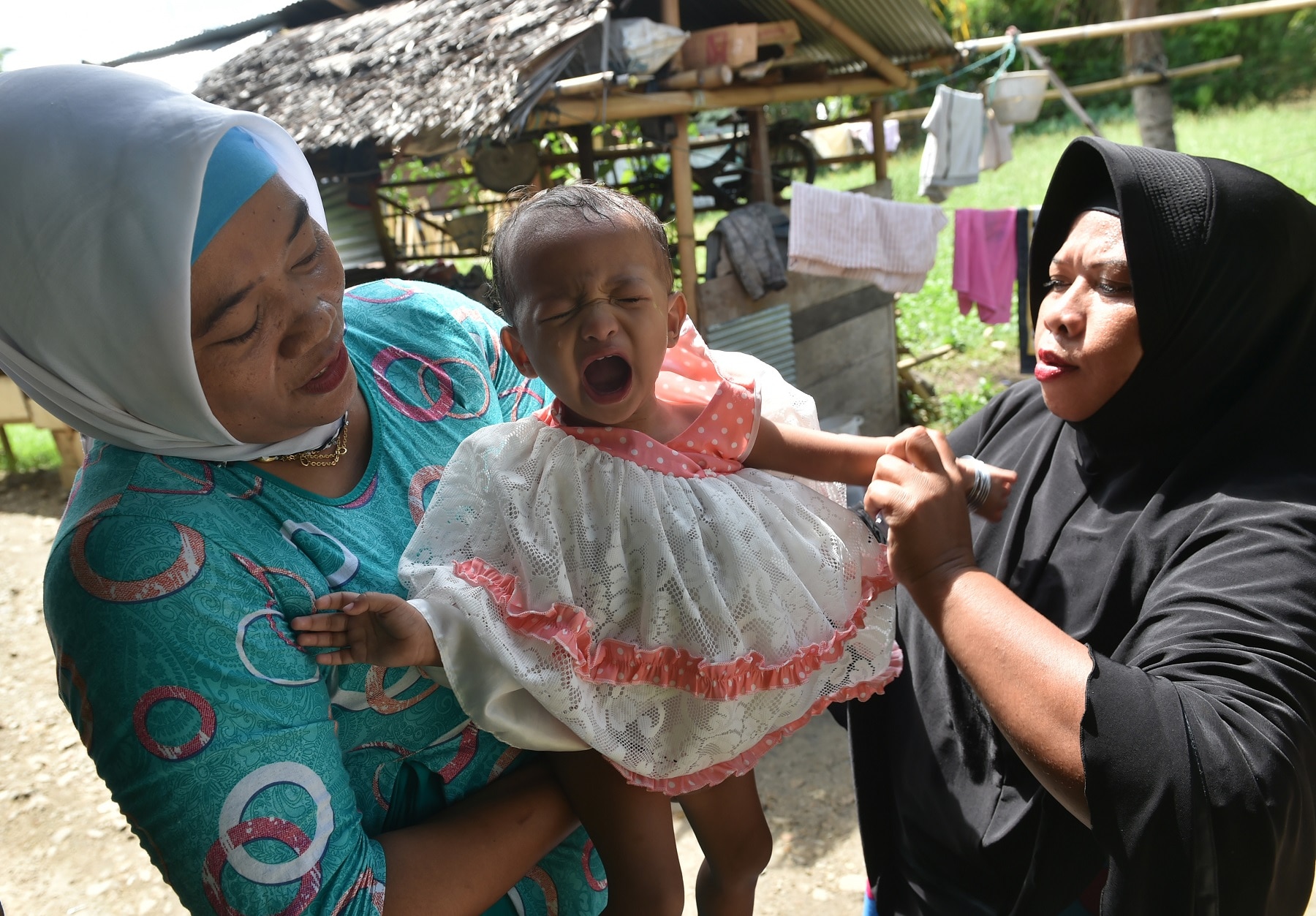
FGM is still being widely conducted in Gorontalo
WHEN TO TRAVEL
The dry season runs from May to October, and it is basically the only time roads in Sulawesi become passable.
HOW TO GET THERE
Fly to Gorontalo (via Makassar). Otherwise, catch a daily bus or Kijang (public car) from Manado to Gorontalo.
For all international flights visit www.momondo.com or www.skyscanner.com
For all domestic flights check out Lion Air, Garuda Indonesia or Sriwijaya Air
